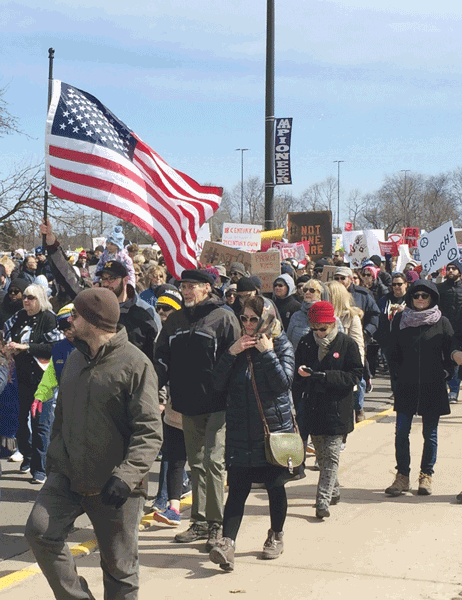Student protests have a long history

Civil Rights
The 1960s civil rights movement enforced the legal rights of African Americans. Although the movement saw many forms of protest and leaders, young students played an integral role during this campaign for equality. The 1963 Farmville Protests and Birmingham’s “Children Crusades,” both within segregated Southern cities, each had thousands of public school students protesting against the segregation of public schools and the inequalities between white and black schools. These demonstrations — and the brutal treatment of young African-American protesters at the hands of policemen — would eventually help spur President John F. Kennedy to draft the Civil Rights Act of 1964, which outlawed discrimination based on race, gender, or religion.
Vietnam War Protests
At the core of the anti-Vietnam War movement was youth and student activism. A significant portion of this movement took part on college campuses, but this did not stop the anti-war sentiment from reaching high schools across the country. Most notably was the landmark U.S. Supreme Court case of Tinker v. Des Moines, in which a group of Iowa high school students wore black armbands to school in protest of the Vietnam War. These students later faced suspension as a result of their protest, yet would sue the school for violating their First Amendment rights. The Supreme Court’s 1969 decision in favor of the students stated that the school could not censor a student’s First Amendment rights, unless it was disrupting the educational process. This decision secured rights for student activism within schools.
Chicano Movement
The Chicano movement during the 1960s and ‘70s aimed for Latinx empowerment, as well as farm laborers’ rights and education reform for schools within Latinx communities. Students had tremendous power within this movement and the 1968 East Los Angeles walkouts or “blowouts” of high schools were demonstrative of this. During the blowouts, 15,000 Latinx students walked out of multiple public schools in protest of prevalent inequalities within Latinx schools. These students made many demands aimed to provide equal opportunity for Latinx students, such as bilingual teachers and more lessons on Latinx culture. These protests, though not granted immediate political support, did provide the Chicano movement nationwide coverage, and mobilized the Latinx community to fight for their own political and social equalities.

